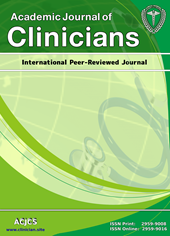Clinical and Epidemiological Perspective of Pregnancy in Adolescent Population: Risks and Outcomes
Keywords:
Adolescent pregnancy, Risks, outcomes, Epidemiology, Clinical perspectiveAbstract
The rapid increase in the adolescent population and the rising proportion of young women who become pregnant constitute a current health problem of undeniable importance throughout the world due to the multiple complications of pregnancy in this group: preterm birth, toxemia, anemia and low birth weight, among others; in addition to the unfavorable social repercussions: school dropout, lack of maturity to adequately care for and educate their child and the impossibility of providing a safe and emotionally stable home. This study is of interest to health professionals and scholars of this topic because it can provide elements, both theoretically and practically—that contribute to the development of future studies in this field, opening up new alternatives in the search for more holistic care for these population, and promoting diagnostic, therapeutic, preventive, and promotional work. For this reason, we aimed to characterize, from a clinical and epidemiological perspective, a population of pregnant adolescents and to describe the behavior of some epidemiological and clinical variables in the sample studied. This study, conducted as a retrospective descriptive study, described the clinical and epidemiological characteristics of a population of pregnant adolescents using a quantitative approach. The study included a total of 50 pregnant adolescent women who were managed and followed up at our center during a period of 30 months; October 2021 through April 2024. We exclude hospitalized adolescents and those with mental or psychological disorders. the study highlighted the poor eating habits of these adolescents, which can be explained by the fact that they often present nutritional deficiencies due to increased dietary needs at this age, when they are still growing, which leads to a greater demand for nutrients. Another important factor is the fact that adolescents often eat somewhat arbitrarily and do not adjust to their true needs due to the accelerated pace of growth and development at this stage. This leads to anorexic diets, obesity, and anemia, which in this study was the most frequently associated disease with pregnancy.





